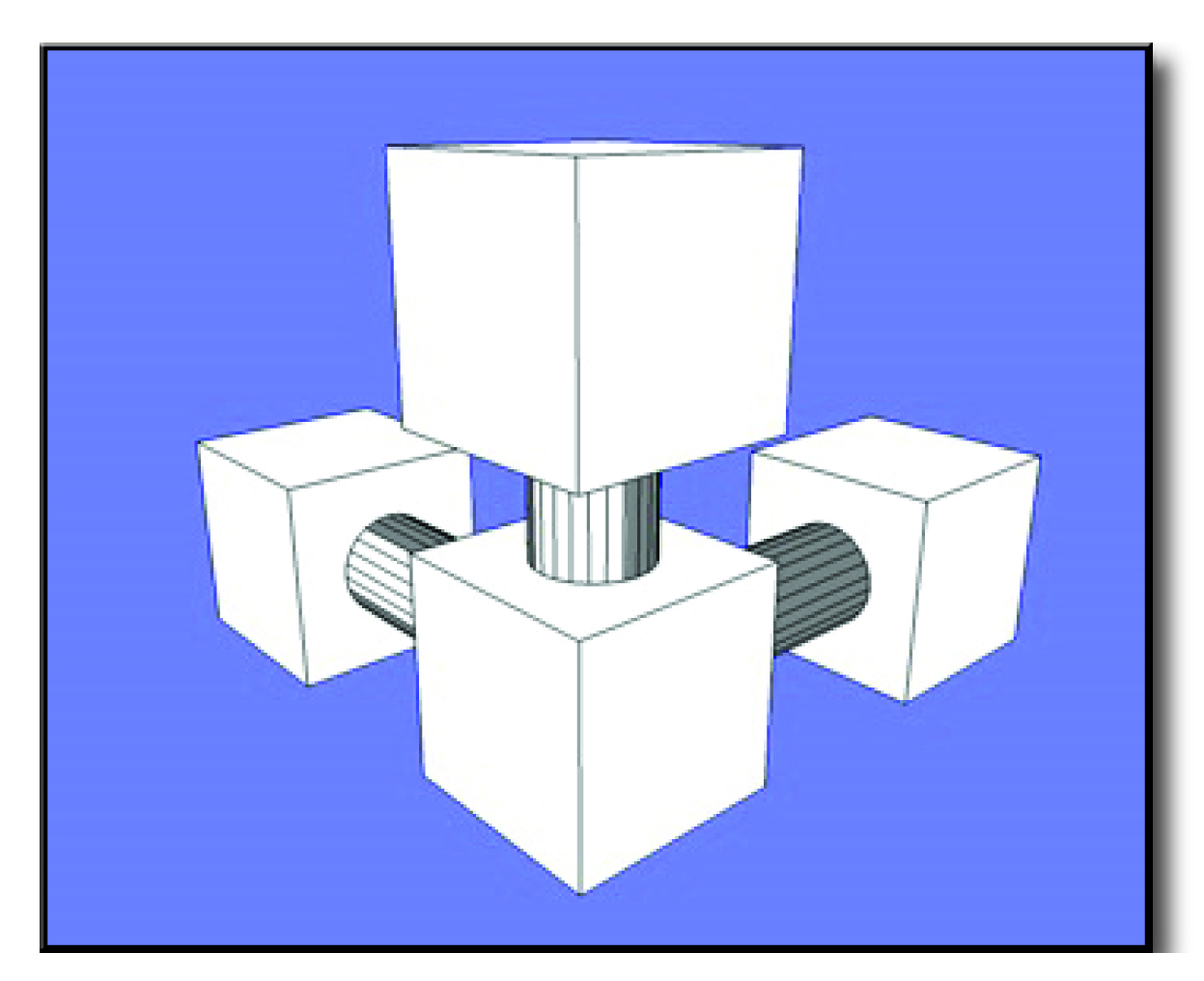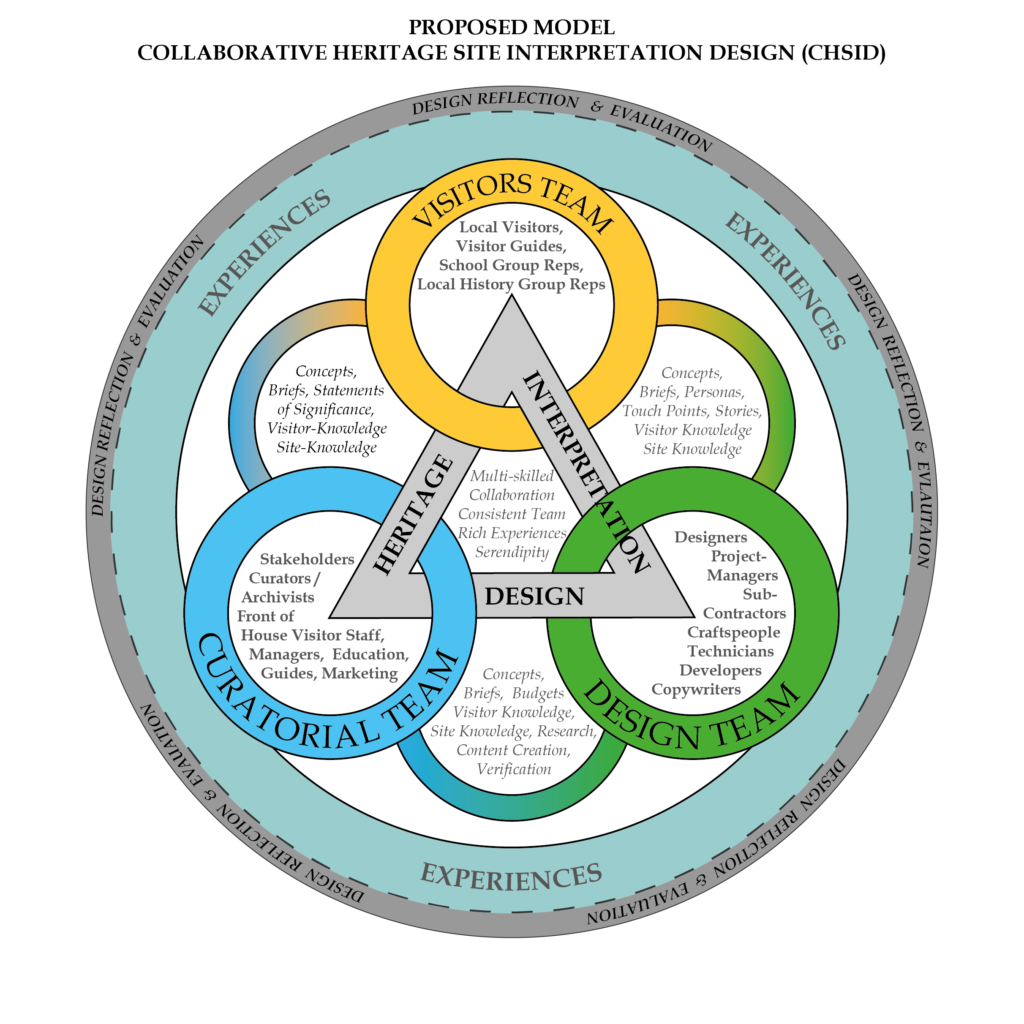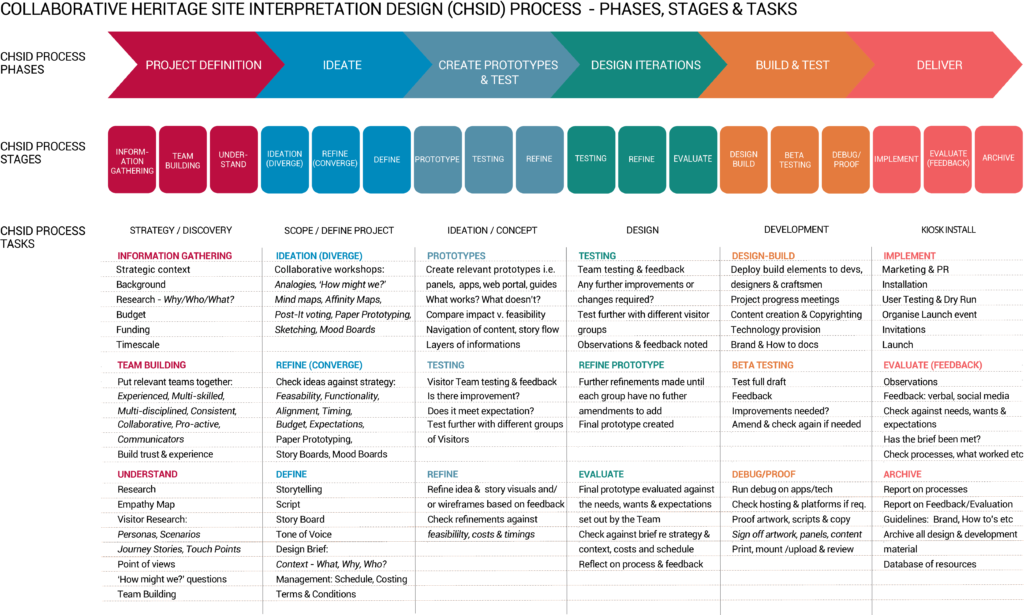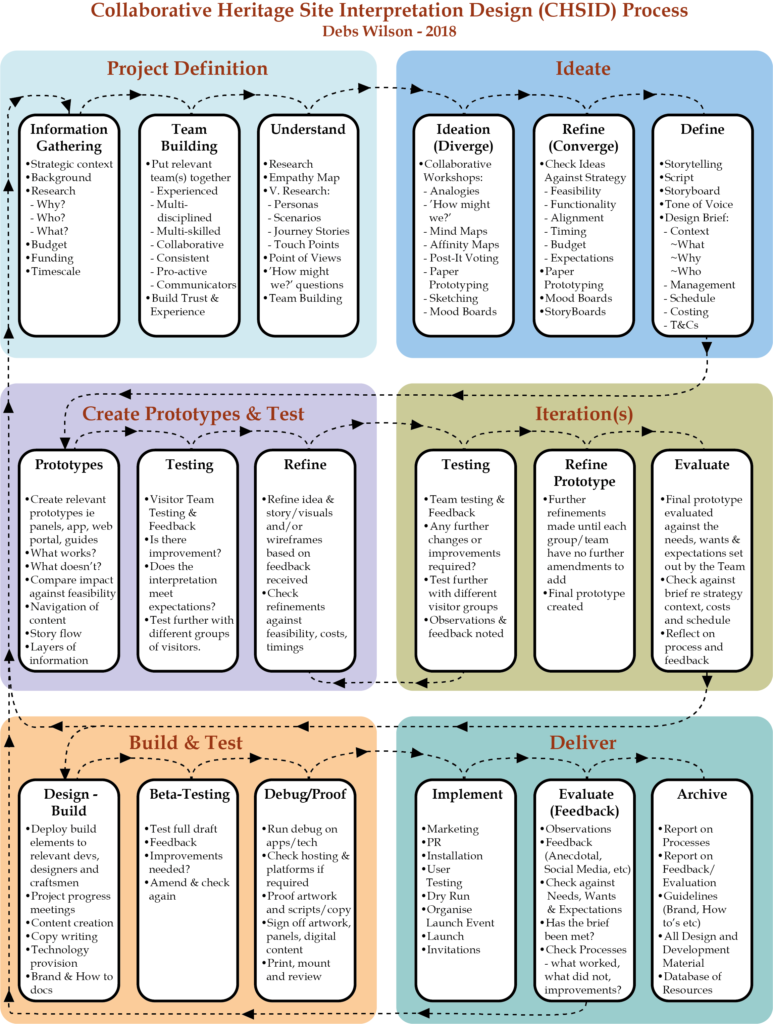Proposed CHSID Model & Process
In answer to my PhD research question: ‘What is the nature and scope of communication gaps in the interrelationships between designer, curator and visitors in the ideation, designing and crafting of interpretation at heritage sites, and whether this is important?’ both the primary and secondary research I conducted confirmed that involvement and engagement with visitors throughout the heritage site interpretation (HSI) planning and design process are currently lacking. In the vast majority of heritage site interpretation design practice, visitors are considered but not part of the team. In order to ensure HSI design follows a growing movement towards a more ‘user-centred’ design framework within the majority of design disciplines, I extended the user-centred design model to accommodate HSI design, by recommending the placing of a permanent team of visitors/visitor representatives with the Curatorial Team and Design Team in what could be called ‘visitor-centred’ design (Ciolfi, Bannon & Fernström, 2008; Hashim, 2013; Ch’ng et al., 2020).
The result was the development of a new ‘visitor-centred’ interpretation design model for heritage sites: the ‘Collaborative Heritage Site Interpretation Design’(CHSID) model, which is presented as a diagram in below and further explained in my thesis (yet to be pubished therefore not available on this site).
Two of my thesis aim’s objectives stated: ‘evaluating methods used to measure and understand visitors’ experiences of interpretation design’ and ‘how this translates through the design process and interpretation’. In developing an understanding of the different design processes used within professional HSI design, I realised there was a definite lack of a detailed step-by-step process for the various stages involved. There were a few examples (Black, 2005; Veverka, 2011; Tilkin, 2016) which provided a reasonable outline, but I could not find a comprehensive detailed design process, which could be used as a flexible template for the majority of HSI design. I therefore considered that in providing a new model for designing HSI, with an accompanying flexible stepped design process to follow for each stage, would be beneficial in helping to take the model forward for future HSI design (Roberts, 2014:p.194).
The new CHSID step process above involves six consecutive ‘Phases’ each containing three ‘Stages’ of ‘Tasks’, guiding the teams on what should be considered at each Stage, similar to the Beaulieu Abbey existing design process. The list of ‘Tasks’ cover generally what may be required for the design of an HSI design project, there may be tasks that are not relevant or tasks that may change slightly depending on the type of interpretation; they are for guidance, consideration and possibly discussion at the start, and during, the HSI design process.
The new CHSIDP has also been designed as a set of laminated ‘cards’ which could be used in the collaborative team meetings as prompts for discussion, reminders or checklists, see below:



